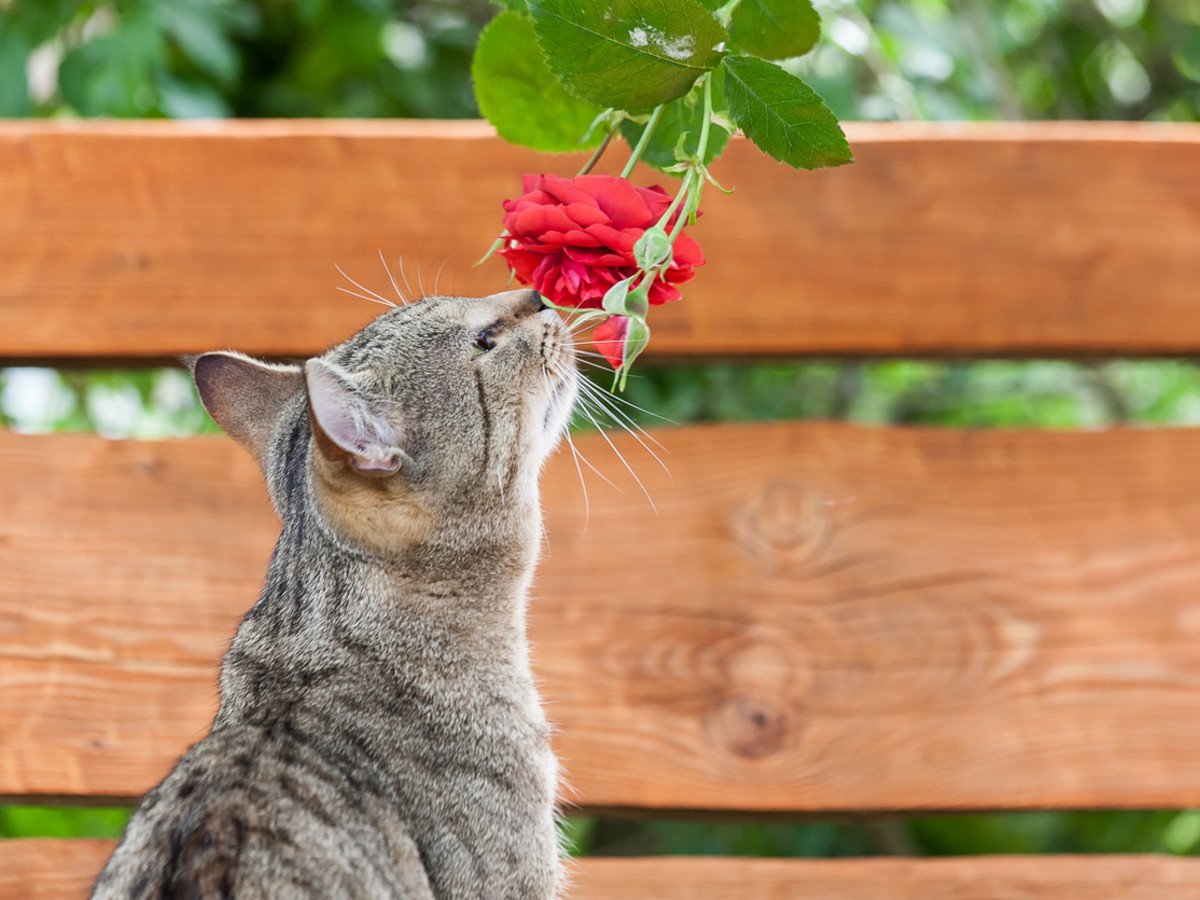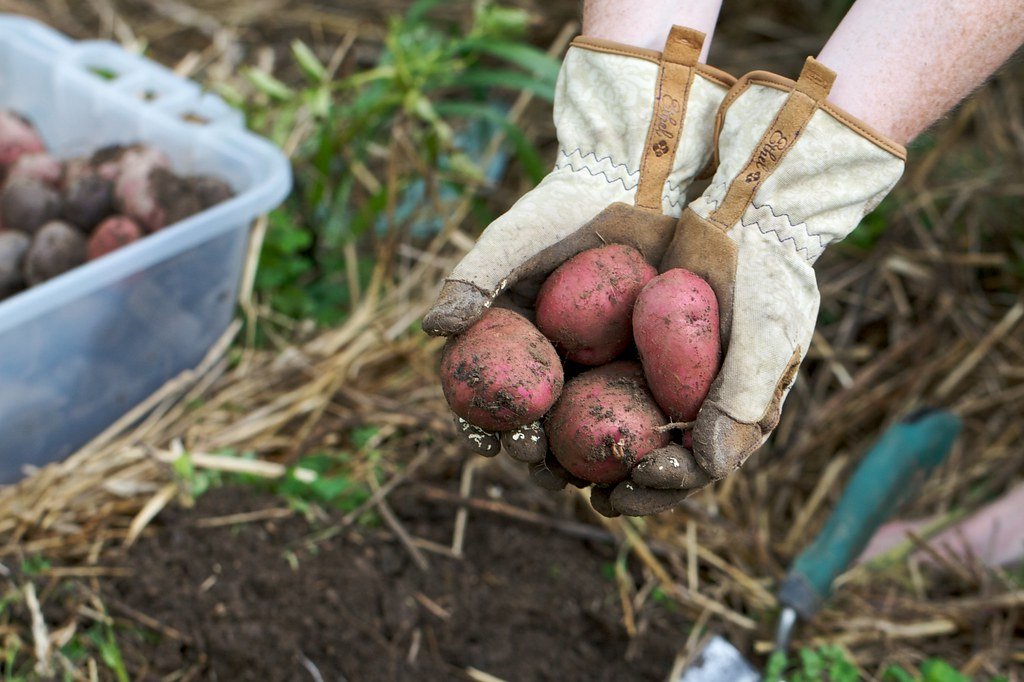The Definitive Guide: Are Roses Toxic to Cats? Safety, Symptoms, and Essential Tips for Pet Owners
Welcome to Garden KT, where we merge the passion for a stunning garden with the practicality of a safe home. For many gardeners, the rose is the undisputed queen of the garden, a symbol of beauty, fragrance, and enduring elegance. But if your home is also ruled by a furry, four-legged feline, a critical question often arises before you bring a bouquet indoors or plant a new bush: Are roses toxic to cats?
It is a question that brings peace of mind to countless pet owners and one that deserves a clear, comprehensive, and well-researched answer. The short, delightful news is largely reassuring, but the long, informed answer requires a deeper look into the difference between true chemical toxicity and potential physical or secondary dangers that the rose plant might present to your curious companion.
This guide will serve as your ultimate resource, dispelling common myths, clarifying the real risks, and providing actionable steps to ensure a safe environment where your favorite blooms and your beloved pet can coexist peacefully. We will explore the botanical facts, potential hazards, symptoms of concern, and preventive measures, ensuring you have all the knowledge necessary for both successful gardening and responsible pet ownership.
The Short Answer: Are Roses Toxic to Cats?
Let’s address the most pressing matter right away: the true botanical toxicity of the rose plant to felines.
When we talk about the rose, we are generally referring to the genus Rosa, which encompasses thousands of species and cultivars. Based on data from major veterinary and animal poison control centers, including the ASPCA Animal Poison Control Center (APCC), the common garden rose (Rosa spp.) is officially classified as non-toxic to cats.
This means that if your cat nibbles on a rose petal, licks a leaf, or even ingests a small amount of the stem, the plant material itself does not contain chemical compounds that would cause systemic poisoning, organ failure, or severe, life-threatening toxicity in the way that plants like lilies or sago palms do.
This is excellent news for anyone who treasures their rose garden or loves receiving a beautiful bouquet. However, while the rose itself is not a primary chemical threat, the comprehensive answer to “Are roses toxic to cats?” must acknowledge several other very real, non-botanical dangers that are often overlooked. Ignoring these secondary hazards is the number one mistake pet owners make when assessing rose safety.
Understanding the Real Hazards Roses Pose to Cats
While the rose plant material is considered non-toxic, there are two primary categories of risk that can still lead to a veterinary emergency or a sick cat. These risks revolve around the rose’s physical structure and its exposure to chemicals in the gardening environment.
1. The Thorns: A Physical Danger
The most immediate and common hazard associated with roses is the thorns. Rose thorns are sharp, rigid, and designed by nature to deter animals. While cats are known for their agility and caution, a curious cat can easily suffer an injury from the thorns.
Potential Injuries from Rose Thorns:
- Oral Trauma: When a cat attempts to chew or bat at a rose stem, thorns can puncture the delicate tissues of the mouth, tongue, or gums. This can lead to painful sores, infection, or difficulty eating.
- Gastrointestinal Tract Injury: If a piece of stem with a thorn is swallowed, the thorn can potentially scratch or, in rare cases, puncture the esophagus or stomach lining. While the digestive system can often break down small, sharp objects, the risk remains and should not be dismissed.
- Eye and Skin Injury: A quick swipe or a playful pounce could result in a thorn scratching the cornea of the eye. Corneal scratches are painful and can lead to serious infection if not treated promptly. Thorns can also lodge in a cat’s paw pad or skin, leading to abscesses.
The question, Are roses toxic to cats, shifts from a chemical concern to a physical one when thorns are involved. A physical injury can be just as serious as a chemical ingestion, requiring immediate veterinary care.
2. Chemical Concerns: Pesticides, Fungicides, and Fertilizers
This is where the non-toxic status of the rose itself becomes complicated, and it is the most critical factor when considering the question, Are roses toxic to cats? Roses, particularly those purchased from florists or grown in an intensive garden setting, are often treated with a cocktail of chemicals to ensure they look pristine, prevent pests, and promote vibrant growth.
A cat licking a rose petal or walking through a recently sprayed rose bush can ingest these chemicals, which are toxic.
Insecticides and Fungicides
Rose gardens are frequent targets for pests like aphids, spider mites, and black spot disease, leading many gardeners to apply systemic and topical pesticides and fungicides.
- Organophosphates and Carbamates: These are highly effective against garden pests but can be extremely toxic to mammals, including cats, even in small amounts. Symptoms of exposure can include drooling, vomiting, tremors, and severe neurological effects.
- Pyrethrins and Permethrins: Often found in general-purpose garden sprays, these are especially dangerous to cats. Cats lack the necessary liver enzymes to metabolize these compounds effectively, making them highly susceptible to poisoning. Even minimal exposure can cause tremors, seizures, and death.
Fertilizers and Soil Amendments
The rich soil needed to grow magnificent roses is often supplemented with concentrated granular or liquid fertilizers. While most common fertilizers (containing Nitrogen, Phosphorus, and Potassium, or NPK) are primarily gastrointestinal irritants rather than true systemic poisons in small doses, large ingestions can be problematic.
- Bone Meal and Blood Meal: These organic fertilizers, commonly used in rose care, can be highly attractive to cats due to their scent. Ingesting large amounts can lead to a dense, putty-like obstruction in the stomach, requiring surgery.
- Iron Supplements: Fertilizers rich in iron can cause iron toxicosis, leading to severe gastrointestinal upset and, in severe cases, internal damage.
When a cat ingests these chemicals, the answer to Are roses toxic to cats changes dramatically from “No” to a resounding “Yes.” It is crucial to remember that a cat exploring a rose bush is often exploring the chemicals on and around it.
A Deep Dive into Rose Anatomy and Feline Digestion
To fully understand why the rose plant itself is safe, we must briefly consider the biology of both the plant and the animal. This detailed exploration is vital for a long-form article addressing the question: Are roses toxic to cats?
Which Parts of the Rose Plant are Cats Drawn To?
Cats are drawn to plants for a variety of reasons, often mistaking them for natural roughage to help digestion or as a playful, dangling target.
- Rose Petals: These are the most common part of the plant a cat might ingest. They are soft, often fragrant, and easy to detach. Rose petals contain essential oils and minimal fibrous material. While they are non-toxic, ingesting a large volume can cause mild, self-limiting stomach upset.
- Leaves and Stems (small pieces): The leaves and non-woody parts of the stem contain more chlorophyll and cellulose. These are typically non-toxic but harder for a cat to digest, potentially leading to vomiting or diarrhea as the body attempts to pass the fibrous material.
- Rose Hips: The fruit of the rose, often appearing after the bloom has faded, is typically bright red or orange. Rose hips are technically edible and even rich in Vitamin C for humans, but they are highly fibrous for a cat. Ingestion is unlikely to cause poisoning but can certainly lead to a digestive blockage if consumed in large quantities.
The Science Behind Rose Safety: Non-Toxic Compounds
The reason Rosa spp. is declared non-toxic is the absence of known phytotoxins harmful to cats. Toxic plants often contain compounds like:
- Cardioglycosides (found in Lilies of the Valley) which affect the heart.
- Calcium Oxalates (found in Pothos or Philodendrons) which cause intense oral pain and irritation.
- Alkaloids (found in certain nightshades) which cause severe neurological effects.
Roses simply do not produce these types of compounds. The plant structure is composed primarily of water, cellulose, simple sugars, and non-toxic tannins and aromatic oils. This is why the authoritative consensus remains that, botanically speaking, Are roses toxic to cats? No.
The Effects of Ingesting Rose Petals vs. Stems
Understanding the difference in ingestion effects is key to accurate risk assessment:
| Part Ingested | Primary Risk | Symptoms | Required Action |
| Rose Petals | Mild GI upset (Non-toxic) | Vomiting, mild diarrhea, loss of appetite (temporary) | Observation, withholding food for a few hours. |
| Rose Stem/Thorns | Physical trauma/Obstruction | Oral bleeding, difficulty swallowing, severe vomiting (potential perforation) | Immediate vet consultation. |
| Sprayed Rose Plant | Chemical Poisoning (Toxic) | Drooling, tremors, seizures, severe GI distress | Immediate emergency vet care. |
This table clarifies that the main issue is rarely the rose petal itself, but the associated factors. Therefore, any discussion on Are roses toxic to cats must move beyond the basic plant material.
Symptoms to Watch For If Your Cat Eats a Rose
Even if you know the answer to Are roses toxic to cats is generally “No,” a cat chewing on a plant still warrants observation. Recognizing symptoms is crucial for differentiating between a simple upset stomach and a genuine emergency caused by secondary hazards.
Symptoms of Mild Gastrointestinal Upset (from the plant material)
If your cat has simply eaten a few rose petals or a small, unsprayed leaf, you will most likely see temporary, mild symptoms as the stomach attempts to process unfamiliar, fibrous plant matter.
- Vomiting: Usually a single instance, or maybe two, shortly after ingestion, often containing plant matter.
- Soft Stool or Mild Diarrhea: Usually resolves within 24 hours.
- Temporary Lack of Appetite: The cat may not want to eat for a few hours due to a mildly irritated stomach.
- Lethargy: The cat might be slightly subdued but should otherwise be responsive and active within a few hours.
Symptoms of Chemical Poisoning (from sprays/fertilizers)
These symptoms indicate a serious, life-threatening situation and require immediate emergency veterinary attention. They are the true reason why the question, Are roses toxic to cats, needs careful qualification regarding gardening practices.
- Excessive Drooling (Ptyalism): An early sign of irritation or neurological distress.
- Tremors or Muscle Twitching: This is a classic sign of exposure to pyrethrins/permethrins or organophosphates.
- Seizures: Uncontrolled muscle activity, indicating severe neurological toxicity.
- Severe or Bloody Diarrhea/Vomiting: Suggests severe chemical irritation or internal damage.
- Weakness, Collapse, or Difficulty Breathing: Signs of systemic toxicosis affecting the cardiovascular or respiratory systems.
- Unusual Behavior: Disorientation, excessive meowing, or hiding.
When In Doubt: Recognizing an Emergency
The moment you observe tremors, seizures, or collapse, or if you know for certain that your cat ingested a granular fertilizer or a plant that was recently sprayed, you have a medical emergency. Do not wait for symptoms to worsen. Time is of the essence in treating chemical poisonings.
Immediate Action: What to Do if You Suspect Your Cat Has Eaten a Rose
If you catch your cat in the act or find evidence of ingestion, follow these crucial steps immediately.
Gathering Information for the Veterinarian
Before you even leave the house, the veterinary team will need specific information to provide the best treatment, especially if the answer to Are roses toxic to cats is “Yes” in the context of chemical exposure.
- Identify the Source: Was it an indoor potted rose, a florist bouquet, or an outdoor bush?
- Chemical History: If it was an outdoor rose, what pesticides, herbicides, or fertilizers were applied, and when? Take pictures of the product labels or bring the containers with you. This is the single most important piece of information.
- Approximate Amount: How much did the cat eat? A small petal, a full leaf, or a large clump of fertilizer?
- Onset of Symptoms: When did you first notice the symptoms?
Emergency Vet Contact Information
We always recommend having the contact information for both your primary veterinarian and a 24-hour Animal Emergency Hospital readily available. For any potential poisoning situation, contacting a professional immediately is vital. You can also reach out to specialized services like the ASPCA Pet Poison Control Center or the Pet Poison Helpline for expert advice, which may save precious minutes. These are excellent resources to consult when trying to determine, “Are roses toxic to cats?” based on a specific exposure scenario.
- Internal Link Opportunity: For more resources and tips on pet first aid, please check out our detailed guide on Emergency Pet Care Resources.
Do not attempt to induce vomiting at home unless specifically instructed to do so by a veterinarian. Inducing vomiting can be dangerous, especially if the cat is already lethargic or if the ingested substance is a corrosive chemical.
Creating a Cat-Safe Rose Garden: Tips for GardenKT Readers
For the dedicated gardener who also loves their cat, the answer to Are roses toxic to cats does not mean you must choose between your pet and your favorite flower. It simply means adapting your gardening practices.
Organic and Cat-Safe Pest Management
Since chemical sprays are the primary danger, switching to organic, cat-safe pest control is the most effective safety measure.
- Physical Removal: For aphids or small infestations, a strong stream of water or a clean cloth and rubbing alcohol can be used.
- Beneficial Insects: Introduce ladybugs or lacewings, which naturally prey on pests, eliminating the need for sprays.
- Cat-Safe Soaps: Use plain water mixed with a small amount of mild, unscented dish soap. Always rinse the plant thoroughly afterward.
- Internal Link Opportunity: Learn more about environmentally friendly and pet-safe methods in our comprehensive Guide to Organic Pest Control.
Strategic Placement of Rose Bushes
Outdoor rose bushes can be managed with location and planning.
- Fencing and Barriers: Erecting a small, low decorative fence around a rose bed can deter a curious cat from using the area as a digging spot or playground.
- Raised Beds: Planting roses in raised garden beds makes them less accessible for casual chewing and sniffing at ground level.
Using Barriers and Deterrents
Indoor roses, particularly cut bouquets, pose a more direct temptation.
- Placement: Keep bouquets in rooms where the cat does not have free access or on high shelves that are truly inaccessible.
- Scent Deterrents: Cats dislike certain scents. Placing citrus peels, which are natural deterrents, around the base of a potted rose or a bouquet can keep them away.
- Thorn Removal: If you must display cut roses, carefully remove the thorns from the stems before placing them in the vase. This addresses the physical injury risk, leaving only the minimal GI risk of the non-toxic petals.
By taking these steps, you minimize the risks associated with the physical structure and the chemical treatments, making the enjoyment of your roses a non-issue in the greater context of Are roses toxic to cats?
Common Misconceptions: Are All Flowers Toxic to Cats?
The worry about roses often stems from the well-justified fear of other common ornamental plants that are genuinely dangerous. While the consensus confirms Are roses toxic to cats is a “No,” it is essential to be hyper-aware of the truly toxic plants that may share space with your roses in the garden or the home.
Truly Toxic Flowers to Keep Away (Lilies, Tulips, etc.)
It is vital to know that many popular flowers are extremely toxic to cats. The ingestion of just a small part of these plants can be fatal.
- Lilies (Lilium and Hemerocallis species): All parts of the lily are severely toxic and can cause acute kidney failure in cats. This includes the pollen, petals, leaves, and vase water. They are the number one floral emergency for cats.
- Tulips and Hyacinths (Bulbs): The bulbs contain the highest concentration of toxins and can cause intense gastrointestinal irritation, excessive drooling, and cardiac issues.
- Amaryllis: Contains lycorine and other toxins, causing vomiting, depression, and tremors.
- Chrysanthemums: Contain pyrethrins (related to the chemical concern mentioned above) and can cause vomiting and diarrhea.
Other Cat-Safe Flowers for Your Home
For those who want to be extra cautious and limit roses to the garden, there are many other flowers that pose no chemical or physical risk.
- Orchids: Non-toxic and a beautiful addition to any room.
- Sunflowers: Considered cat-safe and add a burst of color.
- Snapdragons: Another non-toxic and structurally safer plant.
By focusing on which plants are toxic, it helps reinforce the fact that the rose is a benign exception. The fact that roses are not toxic to cats makes them a relatively safe choice among common garden staples. Always check the ASPCA’s comprehensive database if you are unsure about any plant, a resource we highly recommend.
Final Verdict: Are Roses Toxic to Cats? (Summary and Conclusion)
The extensive evidence from veterinary toxicology experts overwhelmingly confirms that the Rosa species is not botanically toxic to cats. The plant’s compounds will not lead to systemic poisoning or life-threatening organ failure.
However, the full, responsible answer to Are roses toxic to cats requires the following critical caveats:
- Physical Hazard: The thorns pose a definite risk of oral, skin, or gastrointestinal trauma.
- Chemical Hazard (The Major Risk): Pesticides, fungicides, and concentrated fertilizers used on roses are toxic and can lead to severe poisoning, often mistaken for a reaction to the rose itself.
As a gardener and a loving pet owner, your duty is to control the environment. Enjoy the timeless beauty of your roses, but commit to cat-safe gardening practices, especially opting for organic pest control and mindful placement. By doing so, you can confidently answer the question for yourself and others—no, the rose itself is not toxic to cats, but an unprotected rose environment can certainly be.










